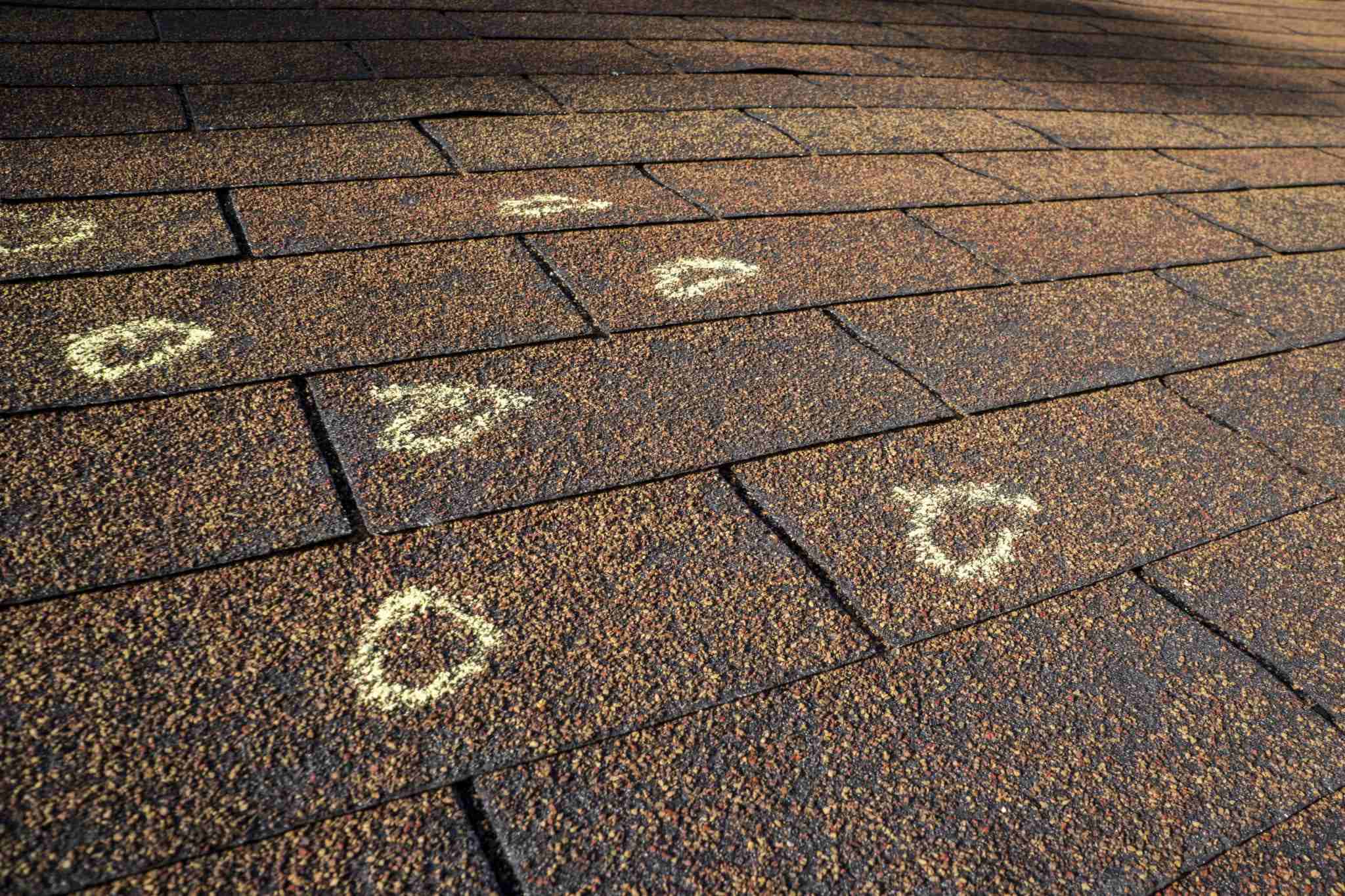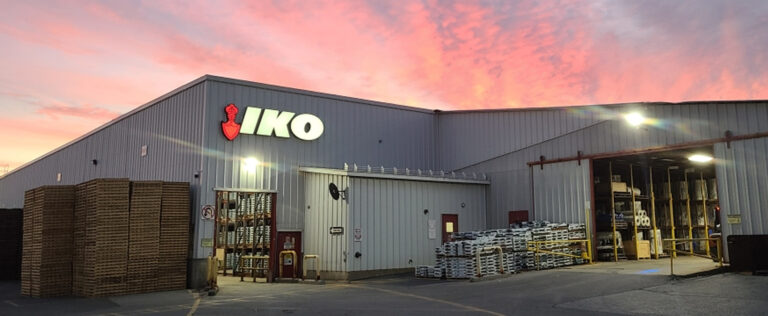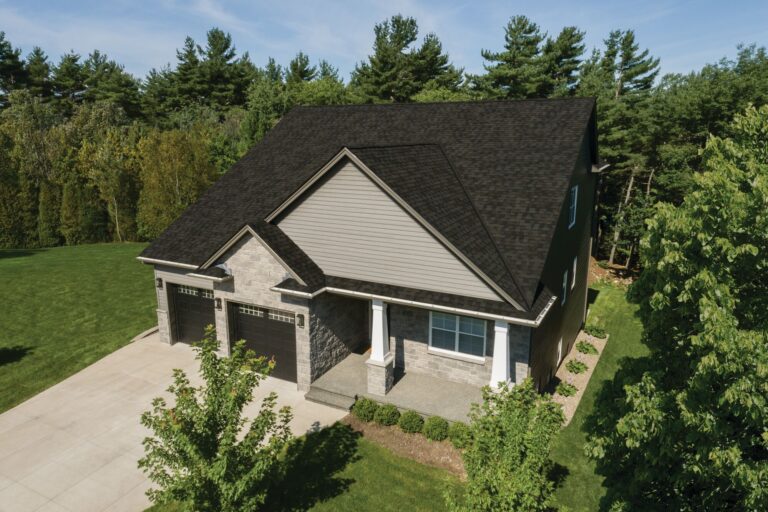How to Tell if You Need a New Roof
Table of Contents:
- Got Leaks?
- Water Stains
- Paint Damage
- Mold
- Granule Loss
- Structural Problems
- Hail
- Hail Varies
- Hail and Shingles
- Conclusion
If raindrops keep falling on your head – inside your home – it may be time for roof replacement. But even that may not be true.
You might think you need an entire roof replacement, but maybe you don’t.
So many variables can affect the performance and durability of your roof. Are there any ways to tell you need a new roof? Yes! The experts at IKO Roofing have put together this handy checklist to help you determine if it might be time to consider a roof replacement. Or not.
Let’s call it IKO Roofing’s “Anti-Bucket” List, to keep those raindrops falling outside where they belong.
How to Know When You Need a New Roof
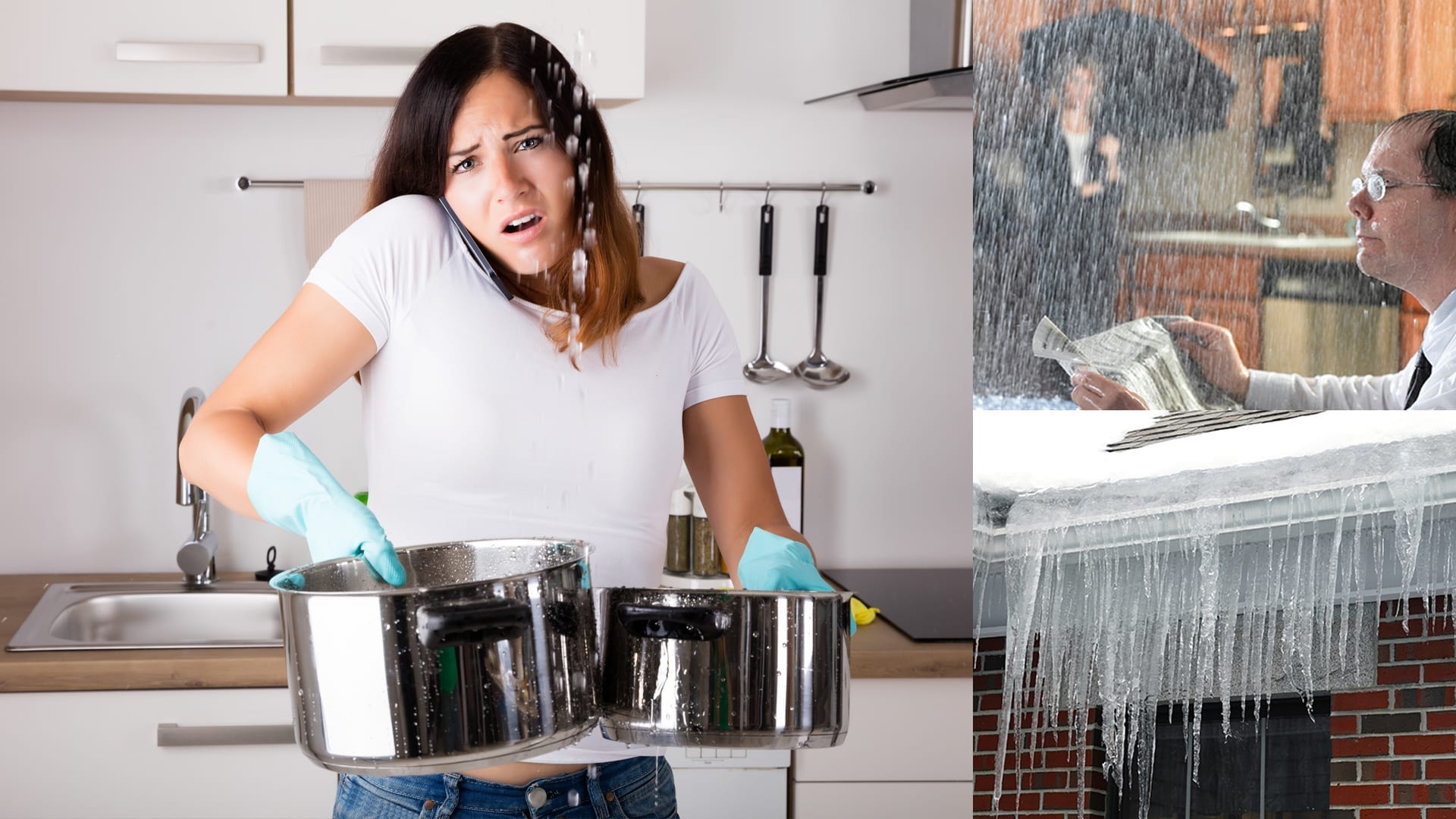
Got Leaks?
The most obvious clue you might need a new roof is finding water inside your home. Regularly check your attic, especially after a rain storm or if you notice an ice dam along your eaves. Look for signs of water penetration because major leaks inside your home are most likely to start there. Keep in mind, though, that water can travel a fair distance – across beams and inside walls for example – from the point of infiltration to where it eventually shows itself.
Ice dams form when snow on the roof melts, runs down slope to the eaves and freezes. As more water runs down and encounters the ice dam, it may then run up and under the asphalt roofing shingles, potentially penetrating the roof deck.
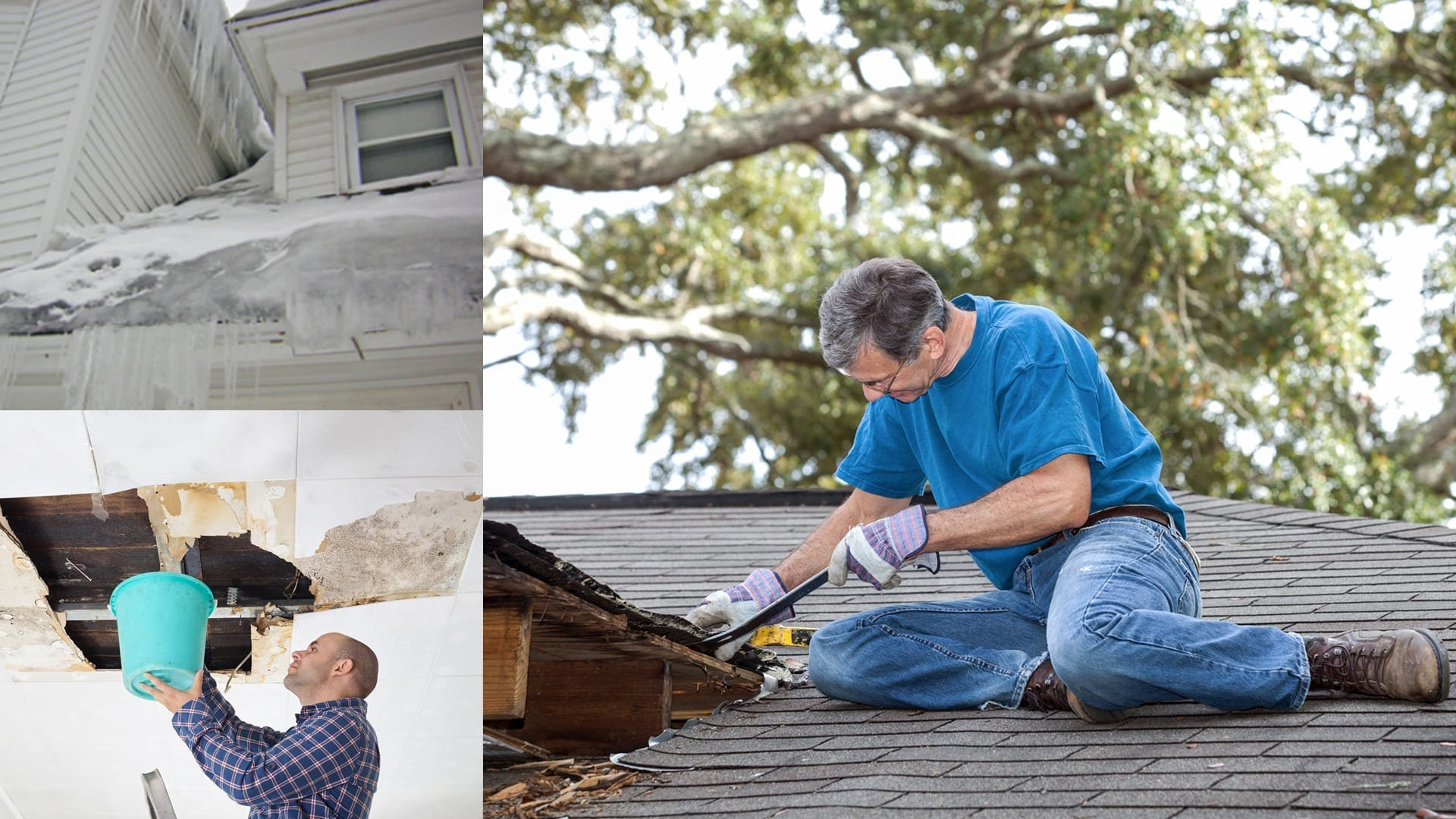
As mentioned above, a total roof replacement may not be necessary to correct such a problem. Perhaps a few shingles have blown off or some flashing has torn loose, exposing the underlying roof deck to the elements.
Regardless, never hesitate to have it checked out and corrected immediately, before the problem potentially worsens, becomes more costly to repair or does require roof replacement. Most professional roofers offer inexpensive roof inspection services.
Water Stains
On the ceiling or running down interior walls and water actually dripping into your home are all cause to investigate and discover the reason, which might be a leak or is often the result of condensation. It’s especially in the winter that warm, moist air rises and often condenses in the attic, where it can pool and leak through the ceiling.
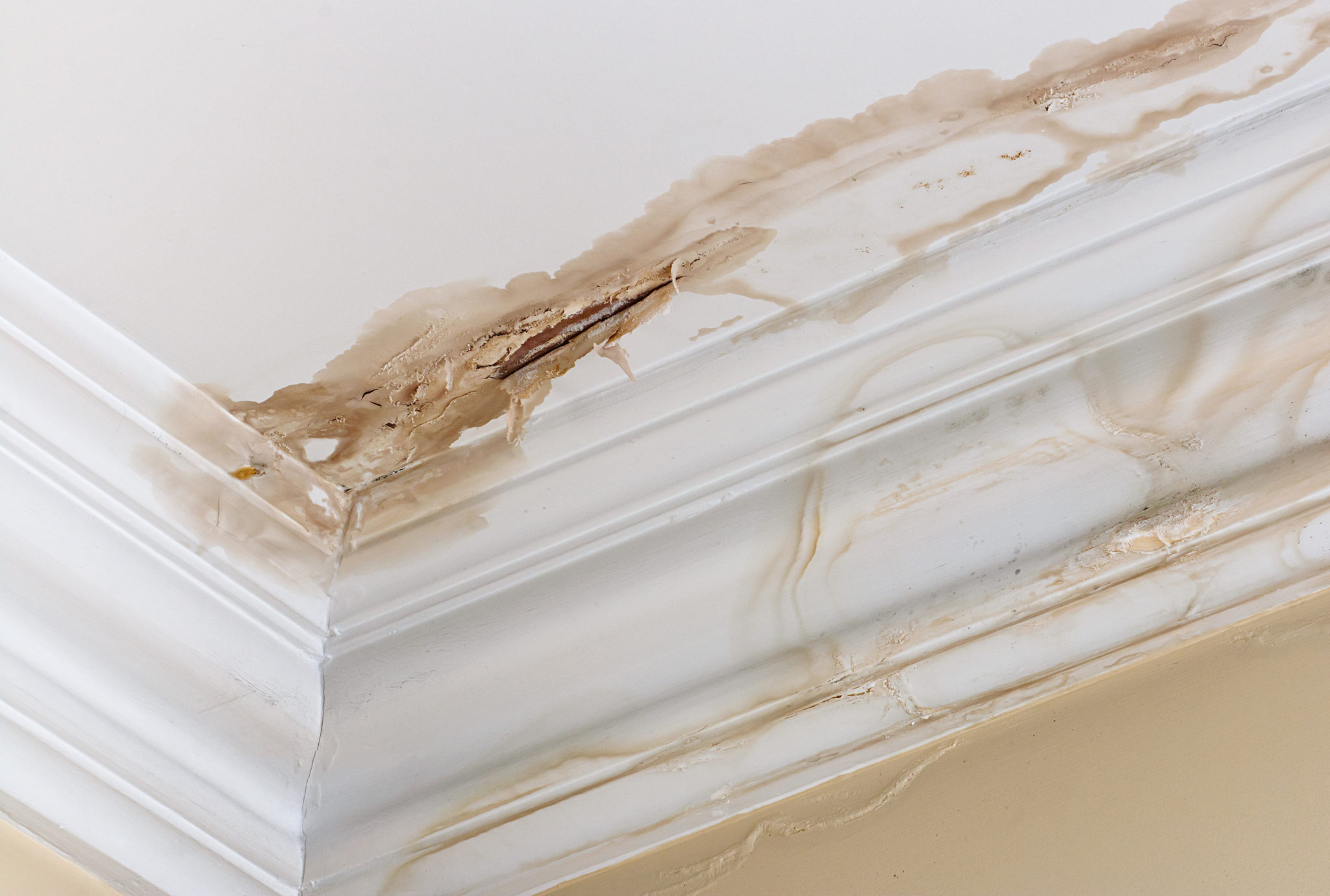
Most water leaks start smaller than the ones shown below. Check for the source of leaks at the first sign of water marks. While they’re not always caused by a roof problem, any leak is a concern that needs to be resolved as quickly as possible in order to minimize damage and expense.
Paint Damage
Paint peeling or blistering, swellings in woodwork or trim – indoors or out – can be caused by water pooling up underneath where it doesn’t belong.
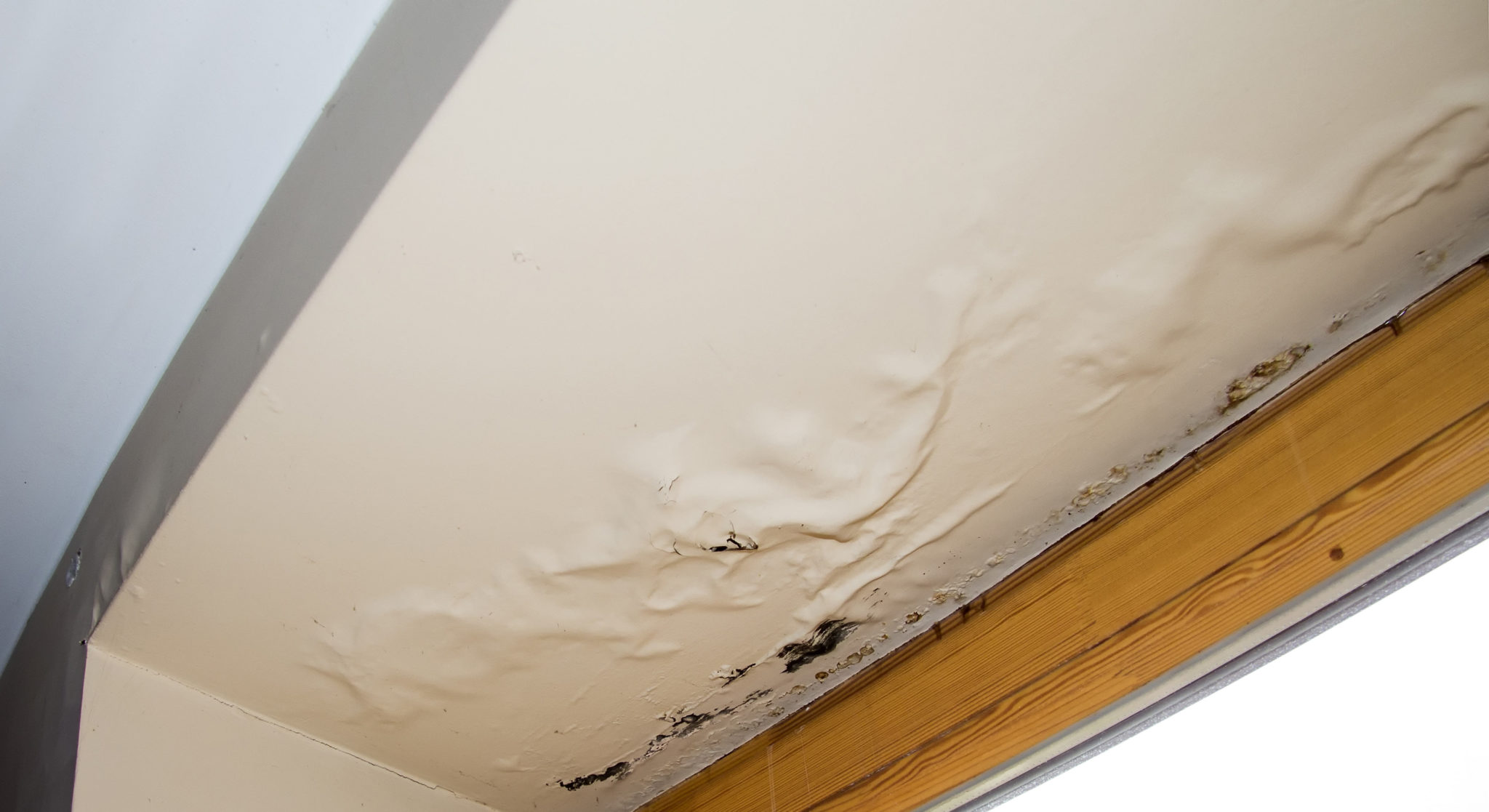
These types of blemishes are much more than cosmetic; they indicate a serious leak that may or may not be caused by a faulty roof, although that is a prime suspect to investigate.
Mold
Mold or mildew growth on ceilings or walls could be a sign of a leaky roof, the result of condensation problems or even a simple plumbing issue. Check that your insulation is dry, your home has adequate ventilation, your bathroom fixtures and plumbing lines aren’t leaking or sweating. Such things may be less costly to correct than getting a roof replacement.
Apart from creating ugly stains and indicating potential roof damage, mold and mildew can have an adverse effect on home air quality and your family’s health. Have the issue addressed as soon as possible.
Granule Loss
When clearing your eavestroughs of leaves in the fall, you may notice that some colored granules have accumulated in the gutters. Depending on the age of your roofing shingles and normal weathering processes, this is not unusual. An excessive amount of granules might be cause for concern. But what is considered “excessive”?
While there’s no way to definitively quantify how much granule loss is too much, the best indication is to look at the roofing shingles themselves. When asphalt shingles are manufactured, more granules are embedded in their surface than are actually necessary so it’s only natural that the superfluous, loose granules would wash away first. Even on brand-new shingles, you can make out the black asphalt the granules are embedded in. However, if the asphalt shingles on your roof have relatively large bare patches where the granules have eroded away and exposed the underlying black weathering asphalt to the elements, you will need to replace any damaged shingles. If the problem isn’t limited to just a few shingles, it may well be time for a roof replacement. A reputable contractor can help you decide.
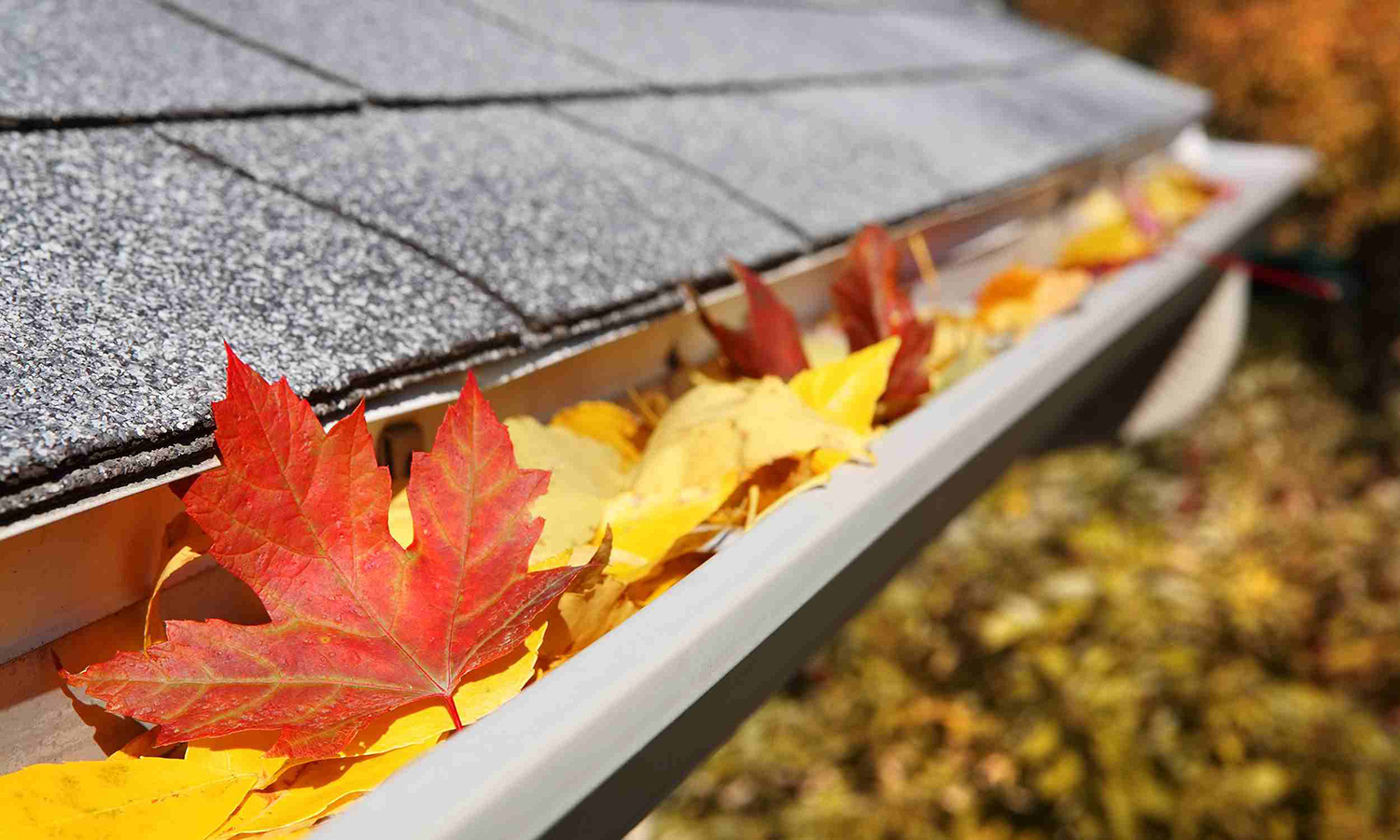
Whenever you clean your gutters, always be alert to unusual quantities of granules that may accumulate there and check that your roofing shingles aren’t balding.
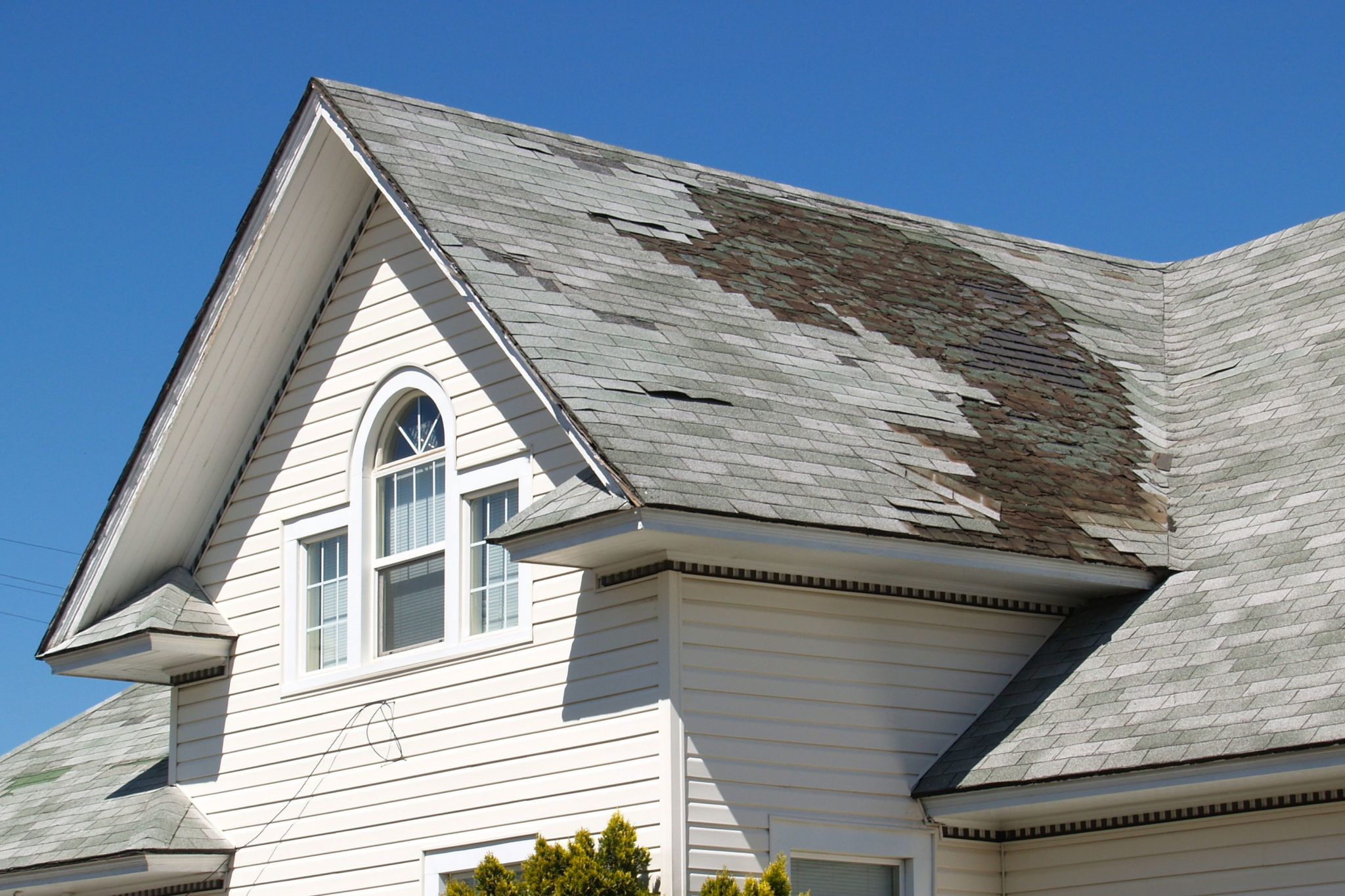
This is how roofing shingles look when granule loss is excessive. A roof replacement will likely be recommended for this home.
Structural Problems
Structural problems are sometimes overlooked as a cause of roof leaks. A sagging roofline can occur regardless of a home’s age or architectural style.
Century homes and log cabins may have actual logs or wood beams for roof supports that can warp and bend over time, with excessive moisture or under heavy snow load. Brand-new homes can experience diminished structural integrity thanks to natural ground settling or even seismic activity. Cracks or other stress fractures in any home’s foundation can possibly distort walls and create space for water to sneak in. So, before you consider a complete roof replacement, invest first in making sure that the rest of your home is structurally sound or you may continue to experience the same issues with a brand-new roof. That would be a true waste of money.
Hail
Hail is one of the most destructive natural forces. Fortunately, it’s a relatively rare occurrence although some areas are more prone to hailstorms than others. According to the National Oceanic and Atmospheric Association (NOAA), hail is most prevalent in Nebraska, Colorado and Wyoming. The largest recorded hailstone in the United States measured 8 inches in diameter and weighed just under two pounds (1 lb 15 oz)!
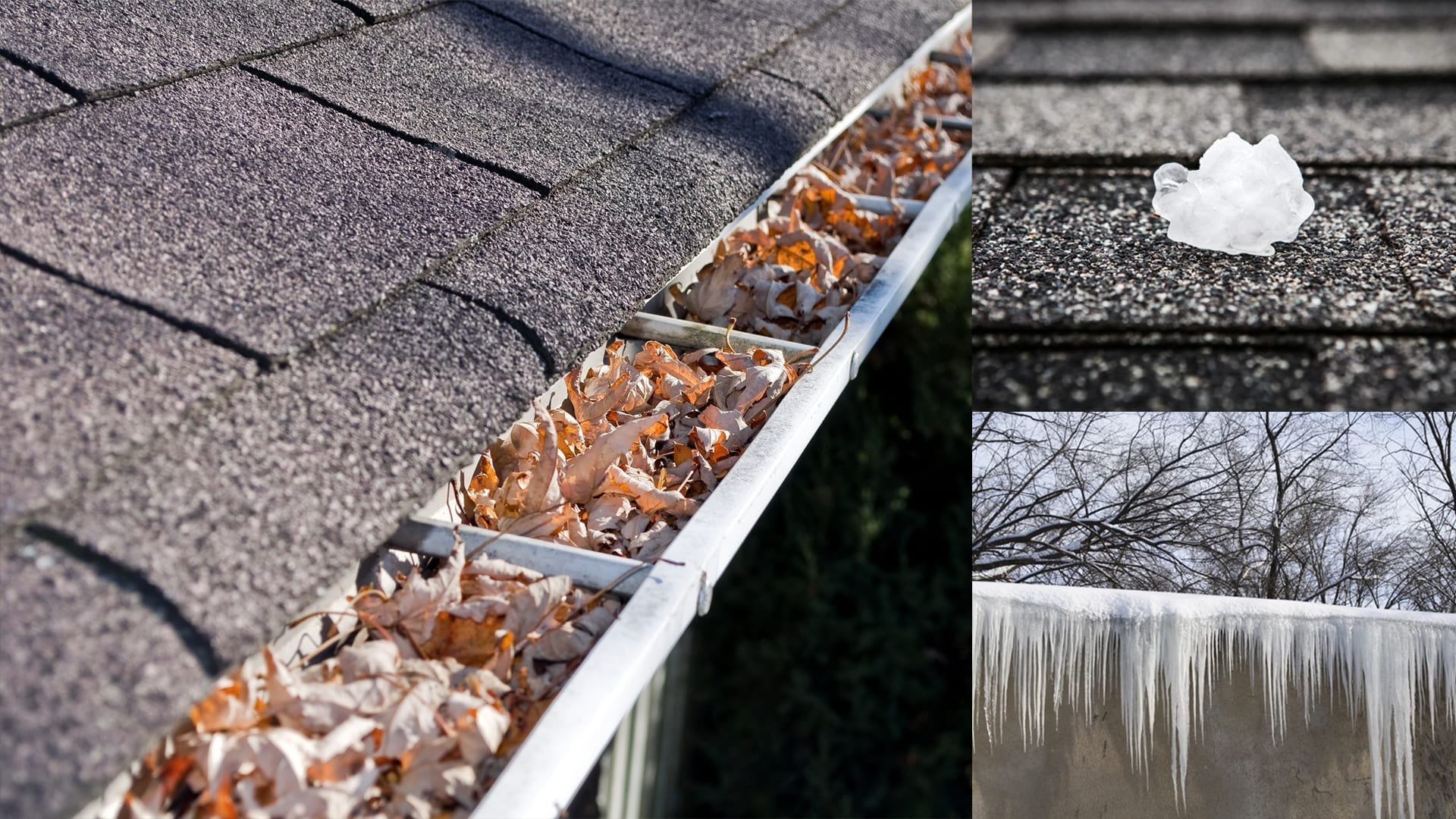
Hail Varies
Hail damage varies considerably, based on many factors such as the size and weight of the hailstones, the outdoor temperature (because shingles become more brittle in cold weather) and the angle at which the hailstones strike the roof, just to name a few.
The impact of hail can potentially damage your roof and other related structures such as gutters and flashings. After a hailstorm, look for dents, pock marks and distortions particularly of your eavestroughing as well as fractures and circular patterns of asphalt showing through on your roofing shingles where granules may have been removed.
Hailstones are usually irregular in shape and can vary considerably in size and weight. Even the ones defined as “pea-sized” can cause serious damage.
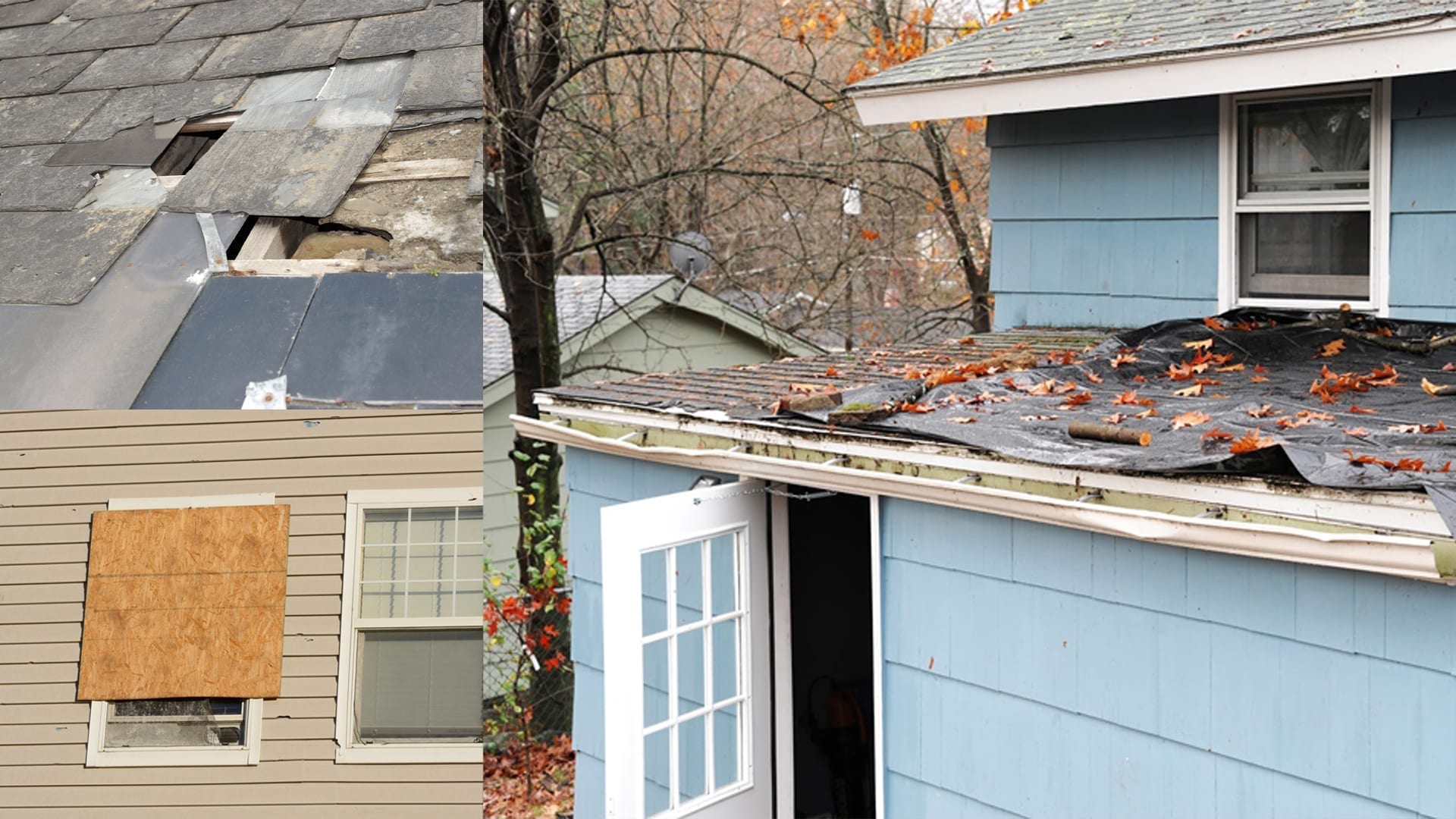
Hail And Shingles
When hailstones strike asphalt shingles, the angle of impact will determine whether a fracture or pock mark where the granules have been removed and the underlying asphalt layer is left exposed as shown below will result. In either case, hail can cause damage severe enough to warrant a roof replacement. Other signs of hail damage occur on gutters, as shown by the dents and distortion in the photo at right.
Whether you can replace a few shingles or need an entire roof replacement will depend on how widespread the damage is.
If you live in an area where hail tends to occur, you may want to consider shingles with an impact-resistance rating for your new roof. While no shingle can withstand the force of hailstones hitting it at velocity without some kind of potential damage, impact-resistant shingles are designed to be more resistant to damage caused by hail. IKO Nordic, Crowne Slate, and Armourshake (Shadow Black only) shingles have a Class 4 Impact Resistance rating.
This impact rating is solely for the purpose of enabling residential property owners to obtain a reduction in their residential insurance premium, if available. It is not to be construed as any type of express or implied warranty or guarantee of the impact performance against hail, of this shingle by the manufacturer, supplier or installer. Damage from hail is not covered under the limited warranty. For further details concerning the FM 4473 standards, visit the FM Approvals website.
Conclusion
We hope you’ve found the information on this “anti-bucket” list helpful, in determining the signs you need a new roof.
You can tell a lot from ground level but, if you see or suspect roof damage, it’s recommended that you have it professionally inspected. A reputable, qualified roofing professional can help you make the best decision based on your unique situation of whether or not you need a roof replacement. To find such a professional roofing contractor near you, just click here.
